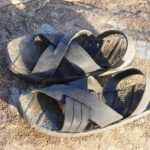As the topic of jungle footwear is quite an extensive one, it was split up into three articles. The first part covered general requirements, including going barefoot and wearing sandals. This second part covers shoes, including barefoot shoes, rubber shoes, and trail-running sneakers. And the third part will concentrate on jungle boots, gumboots, and leech-proof and waterproof socks.
Barefoot shoes
The first impression of the suitability of barefoot shoes as jungle footwear is excellent. Their thread seems to be up to the mark; it protects against thorns, allows water to flow in and out easily, and is lightweight.
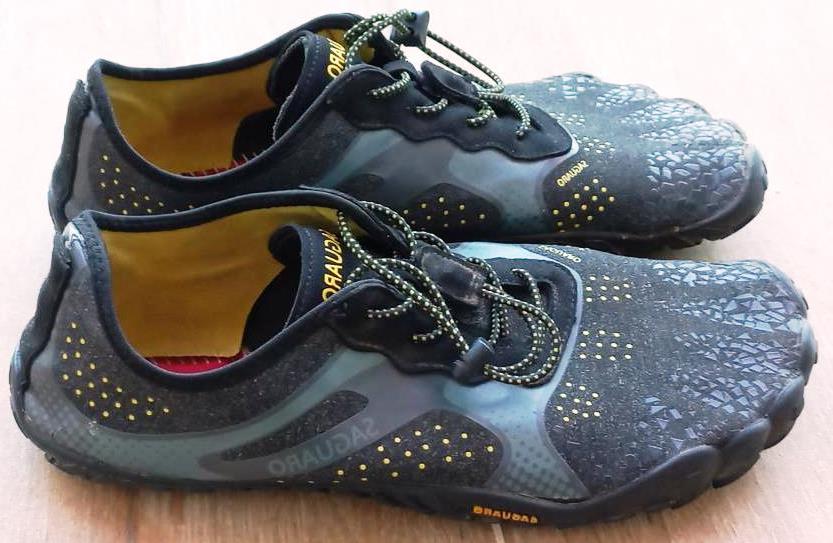
This initial impression, however, fades quickly. Although the sole seems to have a well-developed tread, the profile areas in between the studs fill up soon with jungle soil. And this clayey goo transforms barefoot shoes immediately into slippery sliders.
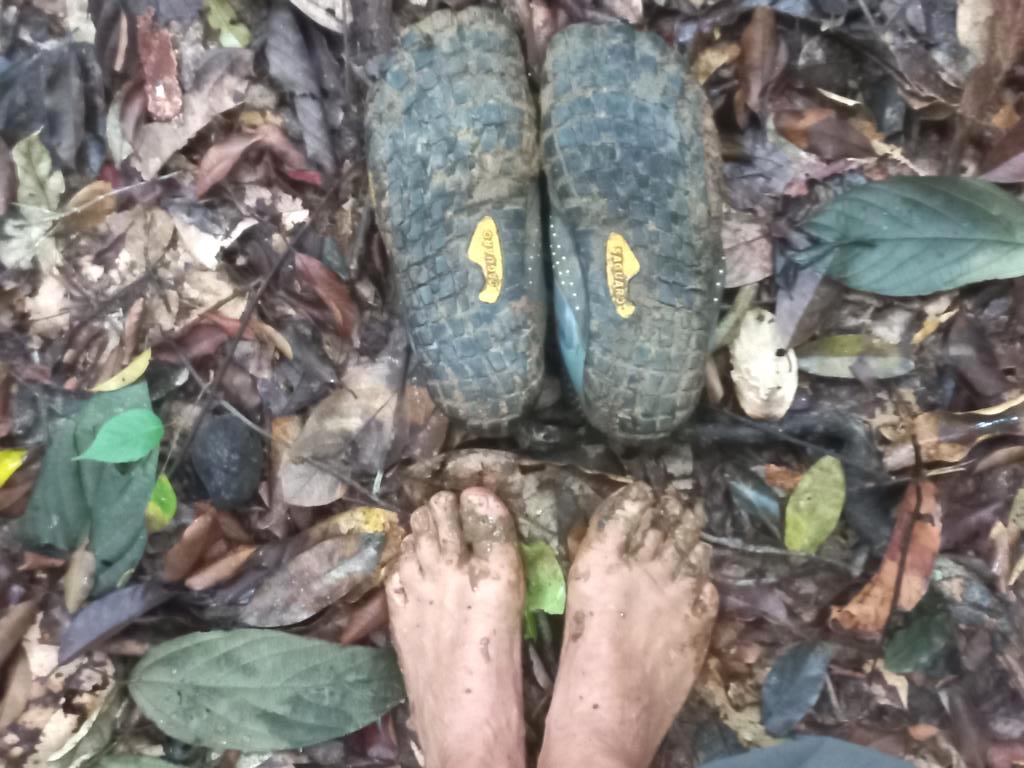
When walking behind native hunters in the forest, the only way to keep up with them is to take off the barefoot shoes and walk barefoot. In my opinion, these shoes are a good way for city slickers to feel a bit more natural. But barefoot shoes per se are useless in the Southeast Asian jungles due to their slipperiness in the rainforests. Instead, take them for a walk in a botanical garden.
Rubber shoes
The favorite style of jungle footwear for Indonesian farmers, boatmen, and jungle workers is rubber shoes, such as these. They are very affordable and cost (as of July 2025) between 20,000 and 35,000 IDR, which is equivalent to between $1.30 and $2.20 per pair. And they are available in every ‘hardware store’ in the countryside.
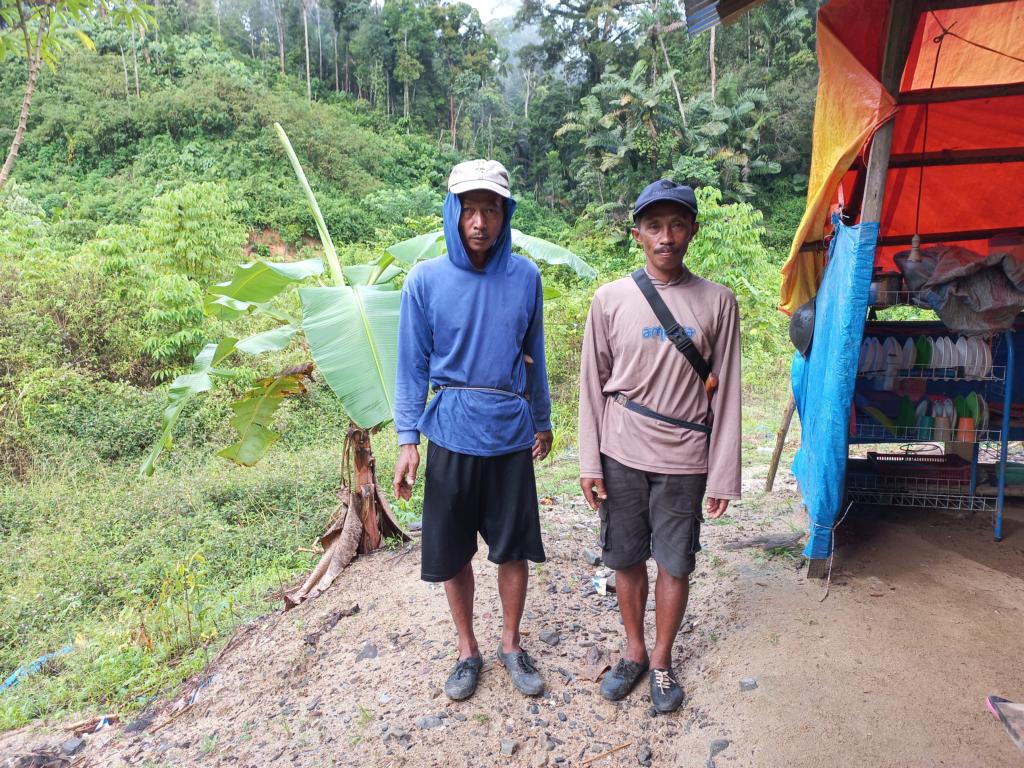
The biggest problem for foreigners is that the standard size of these rubber shoes available in these shops is EU men’s size 40 (UK: 6; US: 7). The maximum size I found in Padang, the capital of West Sumatra, was EU men’s size 42 (UK: 8; US: 9). Additionally, the hind, midfoot, and toe box areas are designed to be extremely slim. I highly doubt that any Westerner’s foot will comfortably fit into these rubber shoes. Which is a pity, because if these shoes were ergonomically and size-wise improved, they would have the potential to become a jungle footwear standard.
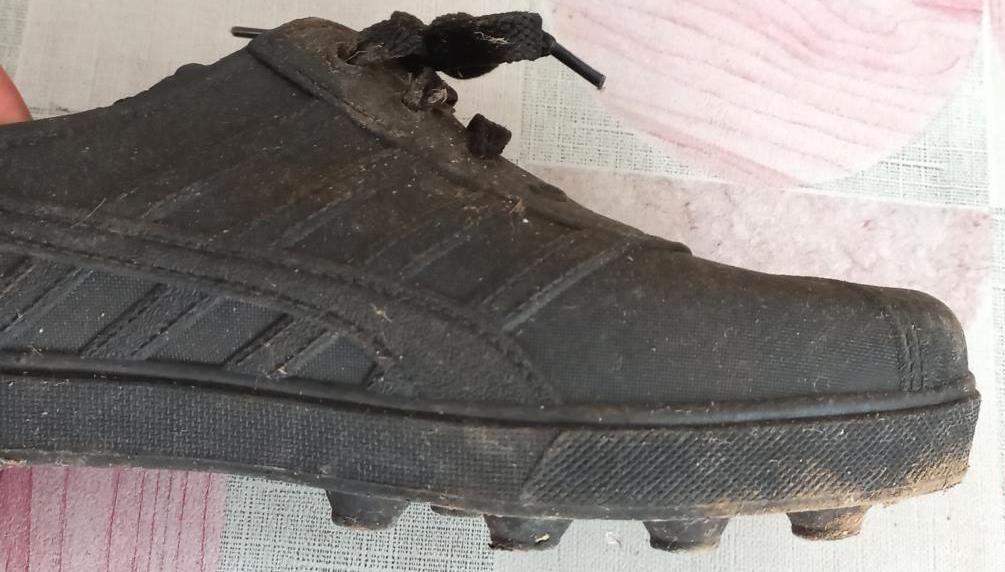
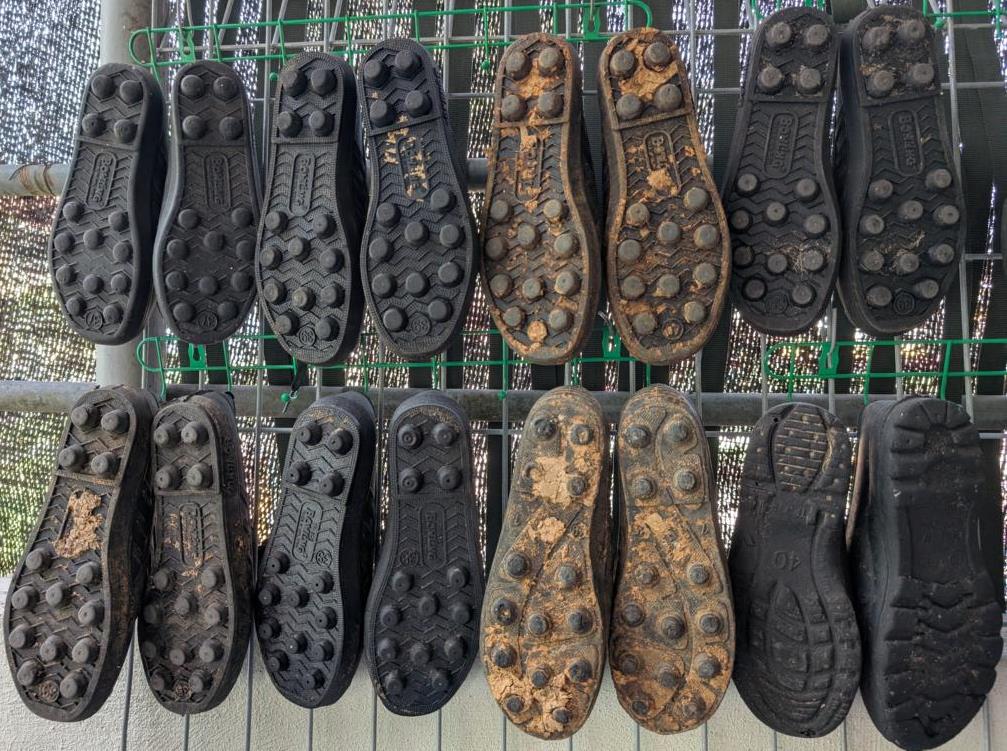
These rubber shoes (Kico Sepatu) are produced as a single injection-molded piece. The rubber material is soft and elastic, and the thickness of the sole provides the right amount of stiffness. There are ten studs on the midfoot and forefoot, and four studs at the heel, at all brands and producers. The quarter (sidewalls below the ankle) are low, allowing water to seep in easily, but also to drain out again. If these Kico Sepatu’s were available in EU men’s size 44 (UK: 9 ½; US: 10) or 44 ½, and with a broader toe box, they would be my favorite jungle footwear.
Trail-running sneakers
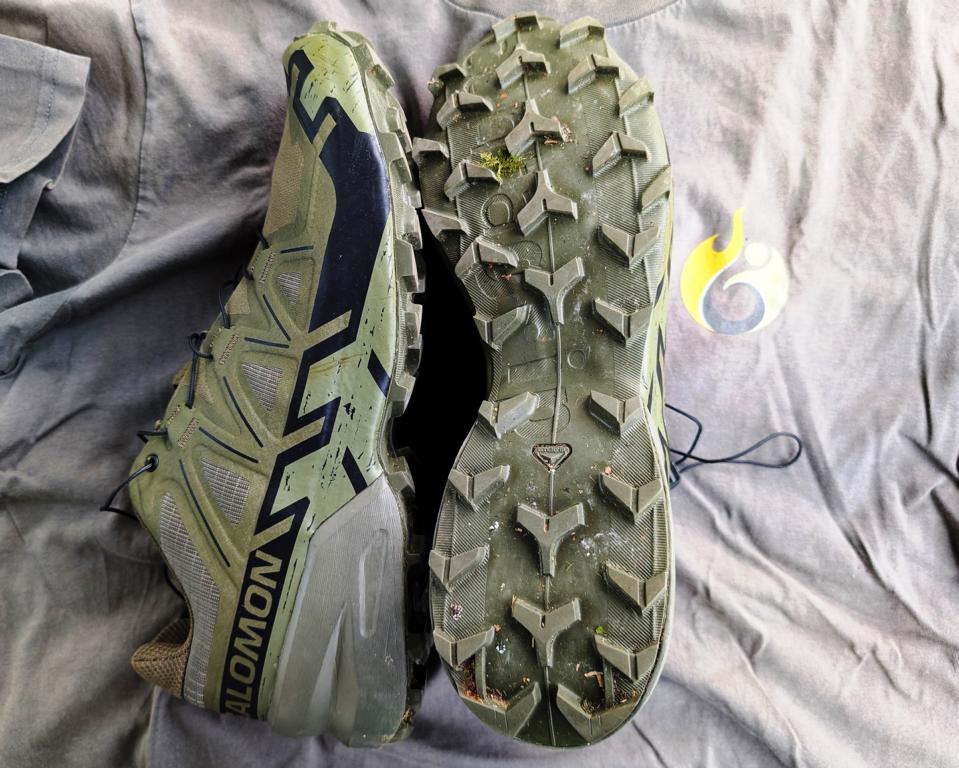
Some models of trail-running sneakers are excellent for use as footwear in the jungle. They are comfortable, sole profiles and materials are optimized for running in muddy conditions, and water that enters can drain well. A disadvantage is that they will not dry overnight due to their thick padding around the ankle area, and the next morning, they will initially feel uncomfortable. The traction and grip are ok, but the studs on the circumference of the sole should be sturdier. This way, walking sideways and on the heel would provide better traction. They do not have a waterproof lining, which is excellent, and no ankle protection, which is not necessary. A lower-foot protection against snakebite is also not needed, as the most dangerous snakes in Southeast Asian jungles are pit vipers, which are all arboreal.
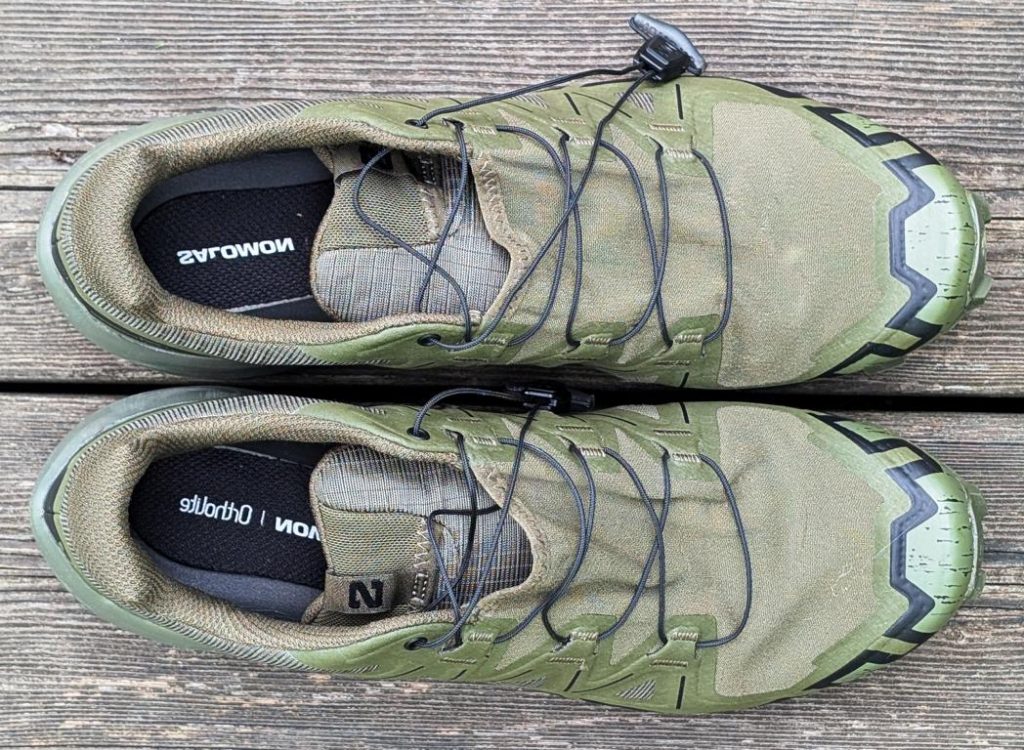
Such trail-running sneakers, however, are generally not affordable for the local population and are only available in capital cities in these countries or online. They are a typical piece of equipment used by visiting foreigners.
Conventional and alpine-style hiking boots
This type of footwear is not suitable for environments in the rainforest. I therefore did not even add a photo of this type of commonly known boots. They are far too hot for the climate, and water cannot seep out from them. Gore-Tex or similar textiles will prevent water from entering. However, in a rainforest, it is unavoidable to get water into the boot. The Gore-Tex material inside will act like a bathtub wall, preventing seepage from escaping. Prolonged walking with water inside the boot has undesirable effects on the foot. These can include jungle (trench) foot, skin maceration, bacterial, and fungal infections. The softened skin can easily lead to blisters and sores. And the much-liked Vibram soles on such boots are a sure bet to slip on algae-covered rocks in brooks. I, therefore, strongly discourage anyone from using hiking boots as footwear for the jungle.
The following article, Jungle footwear for Southeast Asia, Part 3, will concentrate on jungle boots, gumboots, leech-proof and waterproof socks.
Lessons learned about jungle footwear for Southeast Asia, Part 2:
- Barefoot shoes seem to be a good choice as jungle footwear, but their grip and traction make them unsuitable for wearing.
- Rubber shoes are an excellent piece of equipment for locals in Indonesian rainforests, but the available sizes are not suitable for larger-built foreigners.
- Although trail-running sneakers are not optimized for jungle footwear, they fulfill many of the requirements.
- For optimized trail-running sneakers, the padding must be removed, and the stud pattern should be changed.
- Alpine-style conventional boots are not suitable for jungle footwear.
DISCLAIMER
All products mentioned in this article are solely presented as examples to illustrate functionality, without any brand endorsement, and the author receives no remuneration or benefits at all for their inclusion.
.



